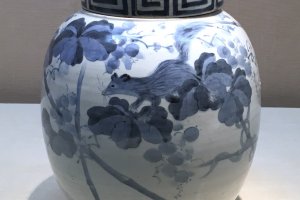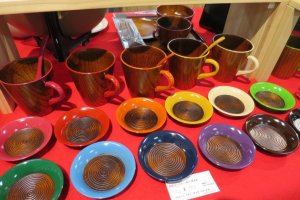Overview
Japan is blessed with some extraordinary traditional crafts and the country's Shikoku region is no exception. One of Japan's main islands, Shikoku's four prefectures - Ehime, Kagawa, Kochi and Tokushima - are home to a full range of crafts, ranging from beautiful pottery and mellow lacquerware to free-range metalwork and casually comfortable cotton textiles. Here is a simple introduction to some of the traditional crafts of Shikoku island.
Ehime
Ehime prefecture's signature ceramic tradition, the traditionally unassuming design features behind Tobe-yaki ware continue to make it an ideal choice for daily usage. Originally earthenware, Tobe-yaki ware soon developed as a sometsuke craft with its famous printed indigo images, before expanding into a larger range of colourings.

Kagawa
Known as Kagawa shikki, the lacquerware of Kagawa prefecture is replete with rich colours and mellow undertones. Courtesy of an exacting multi-layered lacquering process, the final product turns out to be not only quite resistant to light wear and tear. It is this lacquering process, however, that helps give Kagawa shikki products an almost three-dimensional appeal.

Kochi
Hammer-forged blades from Kochi prefecture, Tosa-uchi hamono are created, piece by piece, in a free forging style known as jiyu tanzo. With no set method of creation, the quality of the finished blade is entirely dependant upon the experience of the craftsperson. Famous not only for their practicality, ease of maintenance and durability, Tosa-uchi blades also happen to be extremely sharp.

Tokushima
What a boon to Tokushima the prefecture's traditional Awa-shijira cotton cloth turns out to be. Highlighted by its fine wrinkled texture, the fabric is prevented from becoming clingy and sticking to the skin. This makes the practical Awa-shijira cotton almost the perfect fabric to use for the casual yukata garments that are commonly worn during the hot summer months.


























My mother loved the iyo-kasuri textiles with their shaded patterns, too.